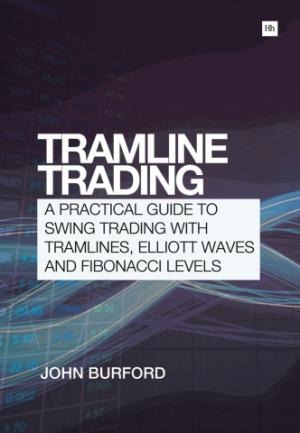
In these weekly articles, I will highlight a share that I believe has an interesting chart pattern. I am primarily a technical trader and use the methods I have developed that I call Tramline Trading. You can read more about my methods in my book Tramline Trading, which you can inspect here.
Most traders and investors make classic errors by chasing a stock near a top and then hang on to it too long during the decline. You will vastly improve your performance by timing your entries and exits more expertly - and that is what I hope to help you with.
My goal in these articles is to cover a share that has an interesting chart. I I developed my tramline system over several years to give me a set of rules which can provide me with trade entries at low risk. The low risk requirement was crucially important because no matter how firmly I believe in my trade, I could be wrong! And I wanted my wrong trades to hand me the smallest possible loss to my account. I figured the winners would take care of themselves.
My hope is that you glean useful ideas and employ at least some technical analysis to bolster your returns. In trading as well as investing, timing is a key factor in your eventual returns.
Update on Ashtead
Recently, I had a Chart of the Week on Ashtead (AHT) and noted the solid-looking tramlines on the daily chart going back to 2013.
Just last week, the market descended back to the lower tramline and is currently bouncing higher off it in a vivid demonstration of the power of tramlines to act as lines of support (lower tramline) and resistance (upper tramline).
(click to enlarge)
And note how the two major highs line up very neatly on my upper tramline as the market hit that line of resistance and knocked the market back.
My tramline trading rule states that a buy signal is generated when the market is on or near an up-sloping lower tramline where a close stop loss can be entered to limit risk.
The bull run is intact and new highs appear very likely. But if the lower tramline is broken all bets are off, but at present the bull continues to have the upper hand.
Royal Dutch Shell - is it in buying range?
Do the oil majors have a friend left? There is little doubt that investors have been rotating out of commodity shares and into practically anything else, and especially construction and housebuilders. They have been scared off by the recent slump in crude prices.
But could this sell-off be an opportunity to pick up these dividend-generators at a bargain?
The daily Shell (RDSB) chart is throwing up a very interesting situation:
(click to enlarge)
What is of note is the recent decline to the Fibonacci 50% support level. This is often an area from where significant reversals can be mounted. Not only that, but there is a major momentum divergence at last week's low. That indicates selling pressure is weakening.
So from these two perspectives, the market is in a position to stage a good rally.
Interestingly, the short interest is at the year's high. Hedge funds have taken bets that the oil price will remain weak and adversely impact the oil majors.
So if a short squeeze can be ignited, the ensuing rally should be sharp.
But what can the hourly chart tell us?
(click to enlarge)
Well, I have a very lovely tramline pair which connects all the highs and lows of the decline off the May highs. And last week, the new low was put in on a small momentum divergence and today [22 June], the market has rallied up to the upper tramline.
A solid close above the upper tramline will give the first sign that a rally phase has started.
Outlook
If last week's low can hold into this week, a rally to at least the £20 area appears on the cards. Further progress will depend on the wave pattern as it unfolds.
This article is for information and discussion purposes only and does not form a recommendation to invest or otherwise. The value of an investment may fall. The investments referred to in this article may not be suitable for all investors, and if in doubt, an investor should seek advice from a qualified investment adviser.